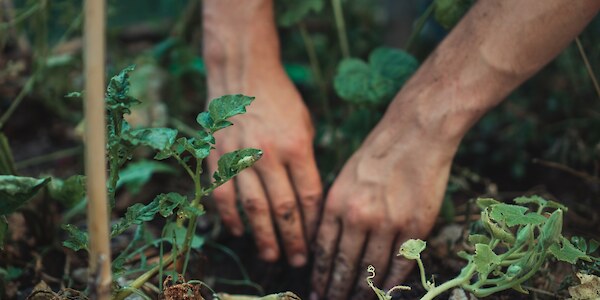
What is best food? How is it grown and produced?
Ross Vintiner explains the ideas behind Kete Ora Trust’s exciting funding venture with Plant & Food Research Rangahau Ahumara Kai. The diverse sward under the Dali Estate’s olive plantation
The diverse sward under the Dali Estate’s olive plantation
Are we eating the best food for our health? What do consumers think of the link between growing systems and the food they eat?
We are excited to be initiating an evidence-based, world-leading research project to find answers to these questions, and we’re grateful to our partners at Plant and Food Research for their support and enthusiasm. The project involves a comparative study of the nutrient density of food produced from biodynamic, organic, and non-organic production systems, and consumer perceptions of such food in Aotearoa New Zealand.
The study will be in three stages including an analsyis of existing research, recommendations on the gaps in the research, and future applied research options. The first stage is already underway!
Why do we need this research?
Surprisingly, there are few studies that compare the nutrient density and phytochemical properties of food from biodynamic, organic, and non-organic production systems, and even fewer studies comparing consumer preference for, and experience of nutrient dense food produced from each system.
We want to provide the evidence that shows how healthy living soil enhances nutrient density in crops, and how different land use systems produce varying soil quality, which in turn yields crops with different levels of the phytochemicals, vitamins, and minerals that are relevant to human health.
What does existing research tell us about different production systems’ ability to produce healthy living soil?
Production studies:
There have been several “production” studies comparing biodynamic, organic, and non-organic systems and practices. In New Zealand, these have included field trials:
- Soil Quality and Financial Performance of Biodynamic and Conventional Farms in New Zealand, Science, 16 April 1993, Vol. 260, pp. 344-349.
- Organic Farming Enhances Soil Fertility and Biodiversity, FiBLDOSSIER, Nr 1, August 2000.
Both studies demonstrate biodynamic and organic soils have higher biological and physical quality compared to non-organic practices. Physical quality includes soil organic matter, microbial activity, soil structure and root symbiosis, permeability, topsoil, diversity. In addition, biodynamic and organic farms use less inputs and energy, and produce less erosion and pollution.
These and other studies have shown that organic production systems (biodynamic and organic) produce crops with variable nutrient content, although organic crops have higher nutrient content the majority of the time, compared with non-organic production.
Nutrient density comparison studies:
There is encouraging recent research that compares regenerative (including organic) and non-organic production systems producing nutrient dense food, although not directly comparing biodynamic, organic, and non-organic systems. It is important to know the difference since other research shows that each of these production systems produce variable levels of soil quality, soil life, and crop nutrients. Here’s an example, published January 27, 2022:
“Soil health and nutrient density: preliminary comparison of regenerative and conventional farming.” Montgomery DR, Biklé A, Archuleta R, Brown P, Jordan J. 2022. PeerJ 10:e12848
Follow the link to the article, or read more about it here (PDF, 233.80 kB).
Stay tuned for more updates as we reach our milestones and share our findings!
Phytochemicals are compounds produced by plants, generally to help them resist infections and consumption by insects and other animals. When consumed, phytochemicals strengthen the human immune system, reduce inflammation, prevent DNA damage, promote DNA repair and slow cancer cell growth.
Posted: 6 September 2023


